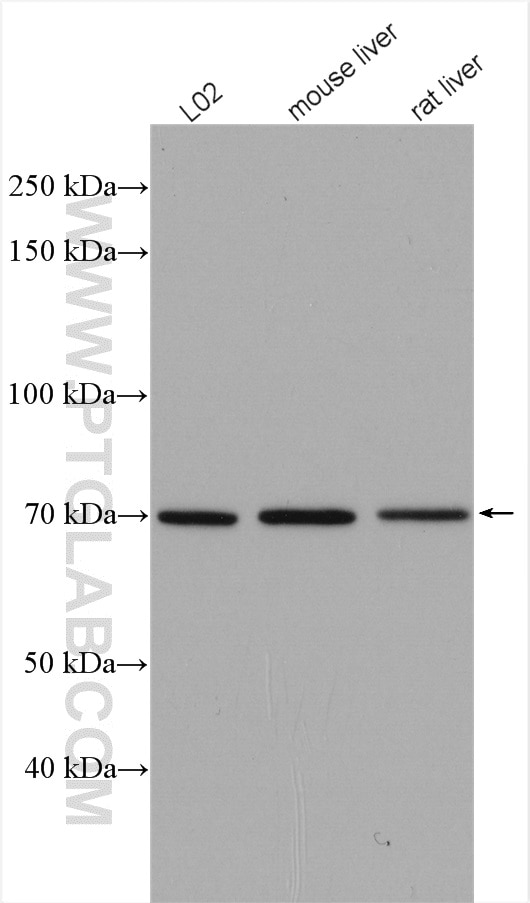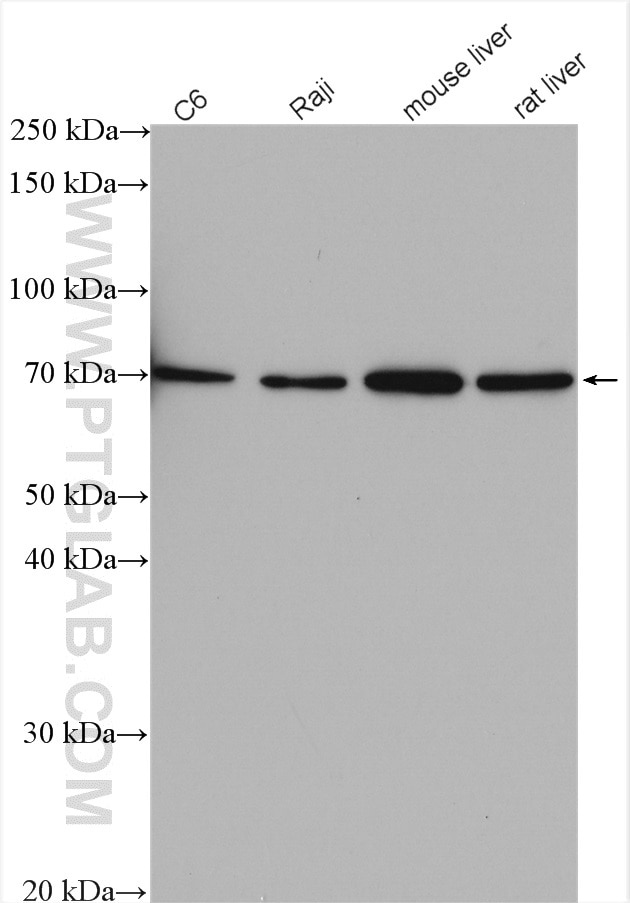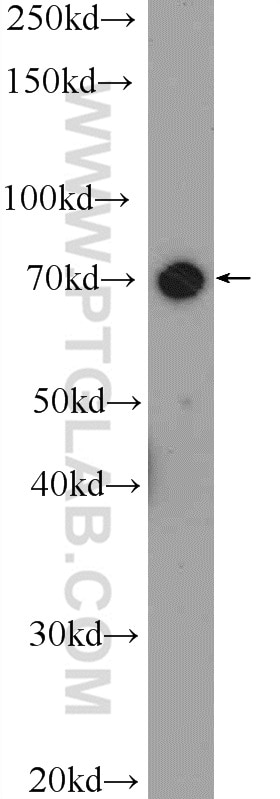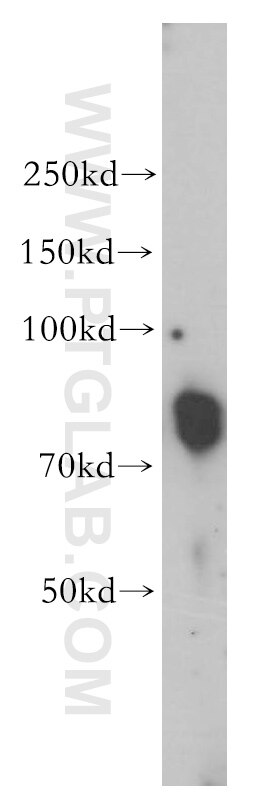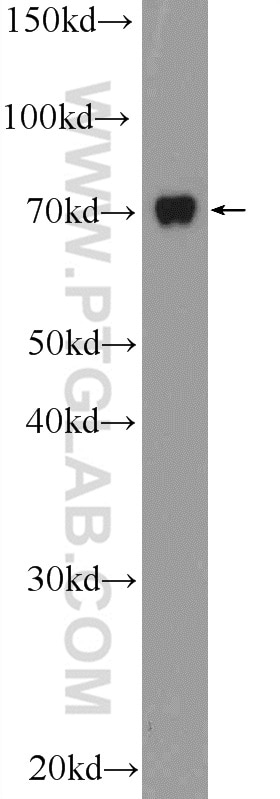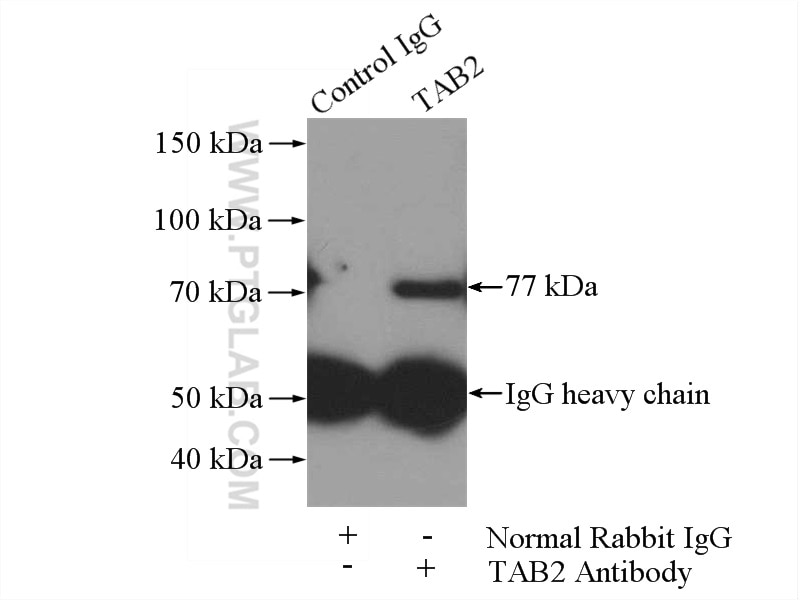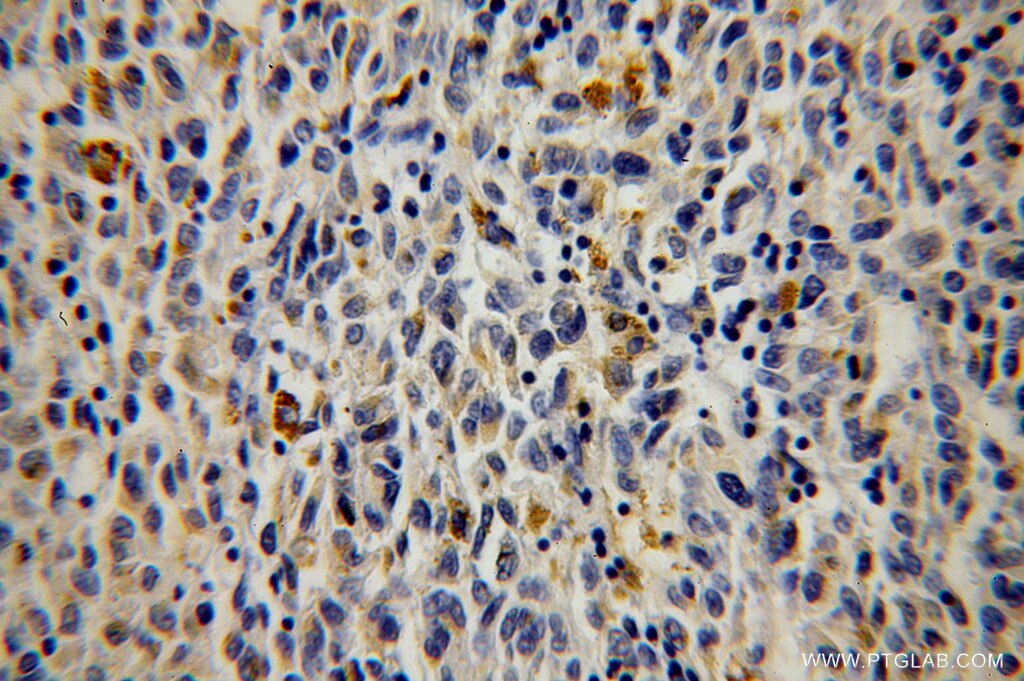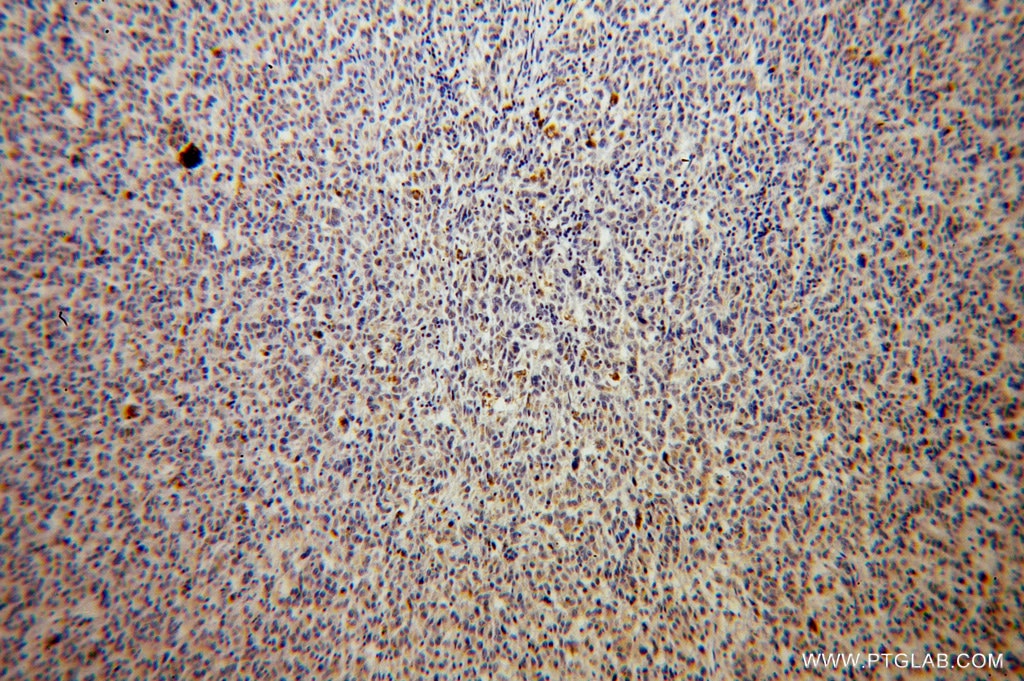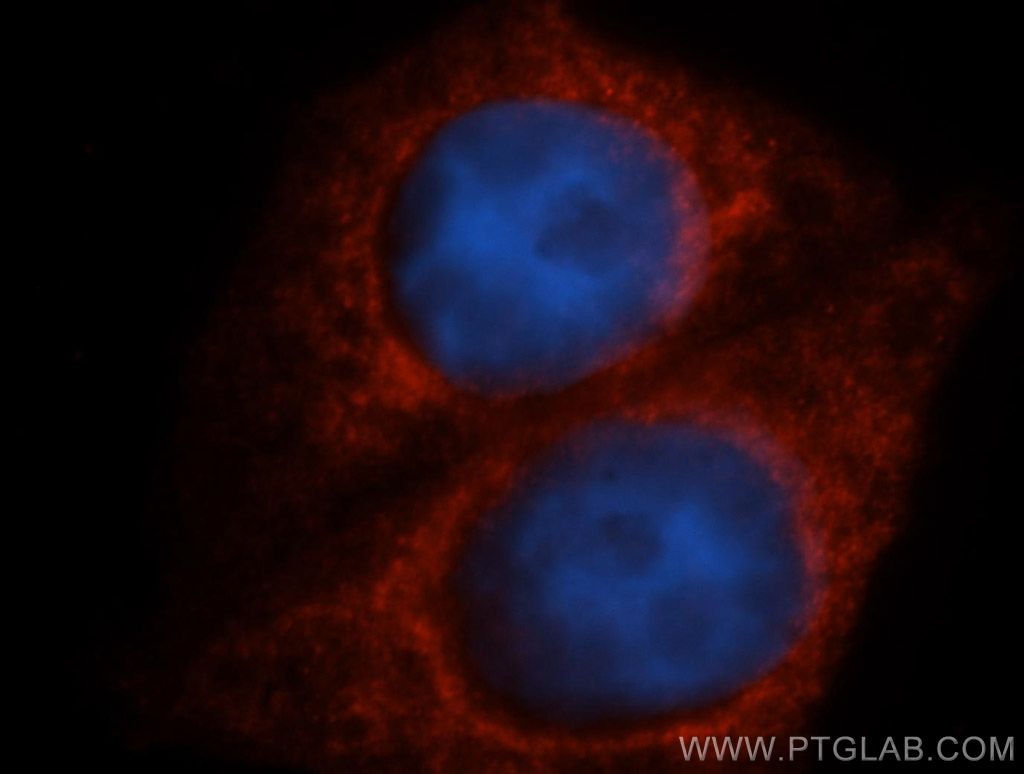- Featured Product
- KD/KO Validated
TAB2 Polyklonaler Antikörper
TAB2 Polyklonal Antikörper für WB, IHC, IF/ICC, IP, ELISA
Wirt / Isotyp
Kaninchen / IgG
Getestete Reaktivität
human, Maus, Ratte und mehr (1)
Anwendung
WB, IHC, IF/ICC, IP, ELISA
Konjugation
Unkonjugiert
Kat-Nr. : 14410-1-AP
Synonyme
Geprüfte Anwendungen
| Erfolgreiche Detektion in WB | L02-Zellen, C6-Zellen, HepG2-Zellen, humanes Lebergewebe, Mauslebergewebe, Raji-Zellen, Rattenlebergewebe |
| Erfolgreiche IP | HepG2-Zellen |
| Erfolgreiche Detektion in IHC | humanes malignes Melanomgewebe Hinweis: Antigendemaskierung mit TE-Puffer pH 9,0 empfohlen. (*) Wahlweise kann die Antigendemaskierung auch mit Citratpuffer pH 6,0 erfolgen. |
| Erfolgreiche Detektion in IF/ICC | HepG2-Zellen |
Empfohlene Verdünnung
| Anwendung | Verdünnung |
|---|---|
| Western Blot (WB) | WB : 1:1000-1:4000 |
| Immunpräzipitation (IP) | IP : 0.5-4.0 ug for 1.0-3.0 mg of total protein lysate |
| Immunhistochemie (IHC) | IHC : 1:20-1:200 |
| Immunfluoreszenz (IF)/ICC | IF/ICC : 1:20-1:200 |
| It is recommended that this reagent should be titrated in each testing system to obtain optimal results. | |
| Sample-dependent, check data in validation data gallery | |
Veröffentlichte Anwendungen
| KD/KO | See 8 publications below |
| WB | See 23 publications below |
| IHC | See 3 publications below |
| IF | See 1 publications below |
Produktinformation
14410-1-AP bindet in WB, IHC, IF/ICC, IP, ELISA TAB2 und zeigt Reaktivität mit human, Maus, Ratten
| Getestete Reaktivität | human, Maus, Ratte |
| In Publikationen genannte Reaktivität | human, Hausschwein, Maus, Ratte |
| Wirt / Isotyp | Kaninchen / IgG |
| Klonalität | Polyklonal |
| Typ | Antikörper |
| Immunogen | TAB2 fusion protein Ag5742 |
| Vollständiger Name | mitogen-activated protein kinase kinase kinase 7 interacting protein 2 |
| Berechnetes Molekulargewicht | 76 kDa |
| Beobachtetes Molekulargewicht | 77 kDa |
| GenBank-Zugangsnummer | BC035910 |
| Gene symbol | MAP3K7IP2 |
| Gene ID (NCBI) | 23118 |
| Konjugation | Unkonjugiert |
| Form | Liquid |
| Reinigungsmethode | Antigen-Affinitätsreinigung |
| Lagerungspuffer | PBS with 0.02% sodium azide and 50% glycerol |
| Lagerungsbedingungen | Bei -20°C lagern. Nach dem Versand ein Jahr lang stabil Aliquotieren ist bei -20oC Lagerung nicht notwendig. 20ul Größen enthalten 0,1% BSA. |
Hintergrundinformationen
Tab2 has a role in the inflammatory signal transduction pathway and is involved in the reversal of NCoR-dependent and NFkB- or APP-mediated gene repression and androgen antagonist response. Besides, it is identified as a cofactor for ERBB4 to assemble NCoR corepressor complex in response to neuregulin [PMID:16469706]. It also functions as an adaptor that links TAK1 and TRAF6 in response to interleukin-1β (IL-1β) or tumour necrosis factor-α (TNF-α), and thereby mediates TAK1 activation [PMID:11460167].
Protokolle
| PRODUKTSPEZIFISCHE PROTOKOLLE | |
|---|---|
| WB protocol for TAB2 antibody 14410-1-AP | Protokoll herunterladen |
| IHC protocol for TAB2 antibody 14410-1-AP | Protokoll herunterladenl |
| IF protocol for TAB2 antibody 14410-1-AP | Protokoll herunterladen |
| IP protocol for TAB2 antibody 14410-1-AP | Protokoll herunterladen |
| STANDARD-PROTOKOLLE | |
|---|---|
| Klicken Sie hier, um unsere Standardprotokolle anzuzeigen |
Publikationen
| Species | Application | Title |
|---|---|---|
Nat Commun Cyclophilin J limits inflammation through the blockage of ubiquitin chain sensing. | ||
Cell Biol Toxicol microRNA-149-5p mediates the PM2.5-induced inflammatory response by targeting TAB2 via MAPK and NF-κB signaling pathways in vivo and in vitro.
| ||
Front Immunol MicroRNA 27a-3p Regulates Antimicrobial Responses of Murine Macrophages Infected byMycobacterium aviumsubspeciesparatuberculosisby Targeting Interleukin-10 and TGF-β-Activated Protein Kinase 1 Binding Protein 2. | ||
J Neuroinflammation miR-155 and miR-146a collectively regulate meningitic Escherichia coli infection-mediated neuroinflammatory responses. | ||
Front Immunol Hepatitis B Surface Antigen Suppresses the Activation of Nuclear Factor Kappa B Pathway via Interaction With the TAK1-TAB2 Complex. |
